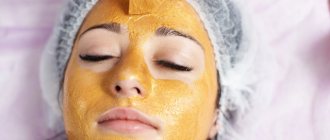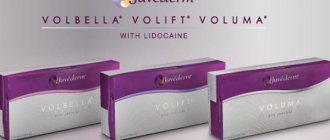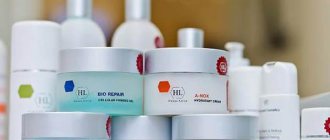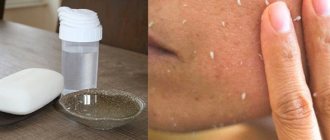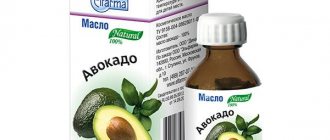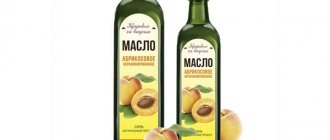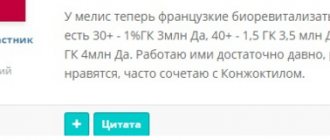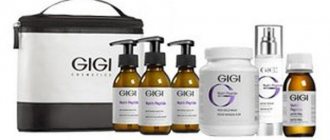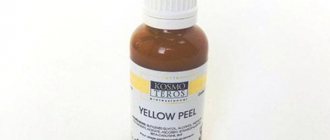Deep cleansing of the skin with acids has gained mass popularity. Performing a chemical peel allows you to quickly reveal fresh, working layers of skin, improving your appearance, minimizing wrinkles, scars, and deeply cleansing pores. Carefully selected composition and concentration of active ingredients gives a bright positive effect without side effects. Multi-acid peeling is considered to be a gentle but effective treatment. Lactolan peeling, ideal for delicate treatment of tissues, is of increased interest.
What is lactobionic acid
Lactobionic acid is a substance formed during the oxidation of the disaccharide lactose. The derivative of the chemical reaction consists of galactose and gluconic acid linked by a stable ester chain.
In medicine, lactobionic acid has long been used to stabilize the process of surgical interventions for transplantation of donor organs, for antibacterial protection through intravenous administration. The substance has recently been used for aesthetic procedures.
The benefits of the chemical are based on its delicate exfoliating properties that prevent tissue irritation. The substance can be used on any type of skin. The value of the composition is based on:
- gradual penetration;
- ideal biological compatibility;
- antioxidant, regenerative abilities;
- possibilities of attracting and retaining moisture;
- acting as a photoprotector.
Lactobionic acid is used, regardless of the season, for healing, rejuvenation, normalization of impaired skin qualities as prevention, treatment, rehabilitation after more serious interventions.
Attention! For peeling, different concentrations of lactobionic acid can be used. Even a single procedure can combine the use of compositions of non-identical strength on adjacent areas of the skin.
For aesthetic interventions, it is popular to use a substance with a concentration of 5–40%. Only ready-made products containing lactobionic acid (toners, serums, peelings) are available to retail customers. You won’t be able to buy a pure substance at a pharmacy.
100 ml of pure lactobionic acid (97%) costs approximately 25 thousand rubles, but trade deals are not concluded with individuals.
Description of peeling
Lactobionic facial peeling is one of the most popular new generation chemical peels today.
The product has a gentle, minimally irritating effect and does not cause burning or itching during application. It effectively affects skin of any age, fights acne and post-acne.
Buyanov Sergey Yurievich (Expert Doctor):
Products with lactobionic acid have an important advantage - they do not stimulate, that is, they do not encourage already “tired” cells to produce the connective tissue framework of the skin, but they slow down the breakdown of existing collagen fibers.
The gentle effect of peeling is based on the large size of the molecules of the active substance - they penetrate the skin gradually without damaging the epidermis.
Lactobionic acid is obtained from the oxidation of the disaccharide lactose and contains gluconic acid and galactose. This compound has been used in the cosmetology industry relatively recently, but has already won the hearts of many masters, as well as their patients.
Indications for use
- Skin hyperpigmentation;
- Acne;
- Post-acne;
- Comedones;
- Photoaging;
- Age-related skin changes;
- Premature aging, wrinkles, including facial wrinkles;
- Scarring;
- Striae;
- Ingrown hairs;
- Skin restoration after minor surgeries and other cosmetic procedures.
Efficiency
Lactobionic peeling has a high level of biological compatibility with human skin, due to which it rarely causes allergic reactions.
It has an antioxidant effect, fights photoaging and age-related skin aging, stimulates the process of collagen and elastin synthesis, and skin regeneration thanks to galactose.
Exfoliation of the upper layers of epidermal cells is carried out delicately, so after the procedure only subtle hyperemia remains on the skin, which quickly passes.
Often the product is used after more traumatic procedures (laser resurfacing, microdermabrasion) for a kind of “smoothing” of the effect.
The essence of the procedure
Treatments with products containing lactobionic acid are carried out at home or by a cosmetologist. On sale you can find a variety of formulations with a mild and safe effect that are easy to use yourself. Chemical peels with a complex composition and high concentration of acids are best performed by a cosmetologist.
The exfoliation procedure with products based on lactobionic acid is carried out according to the classical scheme:
- preliminary preparation of the skin for 1–2 weeks;
- surface cleansing, degreasing of integument;
- applying the active composition, holding for a specified period of time;
- neutralization, removal of product residues;
- tissue hydration.
Products containing lactobionic acid rarely contain a single active ingredient. Popular “companions” of the substance are mandelic, malic, tartaric, and lactic acids. The options successfully complement and modify the beneficial effect of the base component, increasing the efficiency of use of the product.
Recommendations for skin care after the procedure
In order not to harm the skin and consolidate the effect of peeling, you must adhere to the following recommendations:
- For three days after the procedure, wipe your facial skin exclusively with micellar water;
- After washing, gently blot the skin with a soft towel (or paper napkins);
- refuse to use care and decorative cosmetics;
- after the first three days after peeling, wash your face with boiled warm water;
- treat the areas of skin where peeling was performed with care (protect from mechanical and chemical influences);
- drink at least 1.5 liters of water per day;
- use sunscreen if necessary.
Choose a time that is convenient for you - visit the “Latum Clinic” not far from Dmitrovskoye Highway, near the Yakhromskaya metro station (former metro station “Ul. 800 Letiya Moskvy”). You can sign up for a consultation directly on the website. You can also order a call back - the manager will contact you to discuss all the details. Peeling Biorepil at an affordable price is the best solution for those who care about their beauty!
Indications for use
Peels based on lactobione lactobione are considered chemical variants of promising exfoliants with a mild effect. Procedures using the products can be performed by owners of different types of skin (including dry, sensitive, problematic) regardless of age or season.
Cosmetologists call the following indications for performing lactobione peeling:
- deterioration in the appearance of the skin (loss of elasticity, firmness, sagging);
- persistent hyperpigmentation;
- post-traumatic scars, acne scars, ingrown hairs;
- strong predisposition to inflammation;
- clogged, enlarged pores, tendency to increased sebum secretion;
- signs of aging (wrinkles of varying depths, broken oval boundaries, displaced facial features).
Exfoliation intervention is performed as a preventive or therapeutic measure.
When is peeling prohibited?
The ban on performing a cleansing procedure applies to patients in the following cases:
- at any stage of pregnancy;
- during breastfeeding;
- in young years;
- for mental disorders, epilepsy;
- during exacerbation of diseases, especially of a dermatological nature;
- with fever;
- with herpes rashes;
- if there are purulent formations (ulcers) on the face;
- you are allergic to the drug you are using.
HIV and AIDS are not contraindications for exfoliation. But in some cases it is recommended to postpone them so as not to harm the client’s already weakened immune system.
Do not forget that peeling with lactobionic acid belongs to the group of chemical effects, so strict adherence to the procedure protocol and contraindications is mandatory.
Impact effectiveness
Peeling works gradually. Lactobionic base is ideally accepted by the body. The procedure with the substance does not cause unbearable itching, excessive peeling, or bright erythema. This explains the increased interest in products containing the chemical.
The underlying acidic component helps to activate regenerative processes. The action is useful for accelerating the recovery of inflamed, damaged areas. The substance is characterized by an antioxidant effect that protects tissues from photoaging and the negative effects of free radicals.
Lactobionic acid gently but deeply cleanses the skin. The skin acquires an even texture, is renewed, tightened, and gets rid of harmful contents (toxins, impurities). The substance attracts and retains moisture. This helps to stabilize the optimal water balance, prevents further drying out and the appearance of various negative symptoms (tightness, itching, irritation, increased vulnerability).
Gluconolactone exfoliation is recommended to be carried out in courses to obtain optimal results.
Important! The number of procedures is determined individually after assessing the current skin condition. To prevent negative changes, 2-3 interventions are usually sufficient. For the treatment of uncomplicated defects, 5–6 procedures are prescribed. The interval between sessions is 10–14 days.
Pyruvic, azelaic, ferulic, phytic, kojic, trichloroacetic and retinoic acids.
In addition to AHA, BHA and PHA acids, other acids are also used that are not included in the chemical structure of these groups. Let's look at the most commonly used of them.
Pyruvic acid
A ketoacid with a high degree of fat solubility. As a result, the acid has great penetrating ability, therefore it is used to treat acne, seborrhea, and hyperpigmentation. When interacting with the skin, it partially undergoes hydrolysis and turns into lactic acid. Neutralization is recommended. In cosmetology, the standard concentration of pyruvic acid used is 40%.
Azelaic acid
It is a carboxylic acid. Azelaic acid slows down the formation of keratinocytes, has anti-inflammatory and antioxidant properties, and blocks melanin synthesis. Regulates disrupted keratinization processes in the excretory ducts of the sebaceous glands, thereby cleansing the gland ducts. Contained in small quantities in the human body, synthesized during lipid metabolism. Used to treat acne, seborrhea and pigmentation. In peeling compositions it is found in a concentration of 15-20%.
Ferulic acid
Representative of hydroxycinnamic acids. It is a powerful antioxidant and stabilizer of Vitamin C. Ferulic acid is also known for its ability to neutralize free radicals already formed as a result of UV radiation. In addition, the acid prevents the formation of free radicals in the body. Ferulic acid has protective and healing properties, can block excess melanin synthesis and reduce the risk of hyperpigmentation. According to research, ferulic acid also has a pro-apoptotic effect in skin cancer cells. The standard acid concentration for chemical peeling is 12-15%. A distinctive feature of ferul peeling is the appearance of a light white mask. Neutralization is not required. Thus, ferulic acid is a unique substance that shows positive results in the fight against problems such as photoaging, melasma, chloasma and acne.
Phytic acid
In fact, it is an ester of the cyclic hexahydric polyalcohol myo-inositol and six orthophosphoric acid residues. Due to its molecular weight, phytic acid does not enter the middle epidermis, but works on the surface, exfoliating the stratum corneum. The acid also has pronounced brightening and anti-inflammatory properties, therefore it is effective in the treatment of acne and hyperpigmentation. By exfoliating the upper layer of the epidermis, phytic acid stimulates the synthesis of elastin and collagen, which helps improve skin turgor. Phytic acid works at lower pH at high concentrations. Side effects are extremely rare when using phytic acid, so phytic acid peels provide more interesting results from the procedure compared to AHA acids, which can cause sensitizing effects, irritation and significant redness.
Kojic acid
Hydroxyl derivative of γ-pyrone, obtained from various types of mushrooms. The main function of the acid is skin whitening, due to the substance’s ability to inhibit the enzyme tyrazinase, which is involved in melanogenesis. The effectiveness of the acid can be enhanced by combining it with other brightening components: vitamin C, arbutin, glycolic and lactic acids. Kojic acid is also used to lighten skin if you are intolerant to hydroquinone. Typically used in combination with other acids.
Trichloroacetic acid (TCA)
Substance of the carboxyacid group. It is a halogenated analogue of acetic acid. TCA has pronounced keratolytic and stimulating effects. How deeply the acid penetrates the skin depends on the number of layers applied. Trichloroacetic acid is immediately neutralized as it moves through the layers of the skin, causing protein coagulation. TCA is perfect for correcting defects such as scars, post-acne, acne, wrinkles and other skin texture disorders. For exfoliating purposes, concentrations of 15 to 50% acid are used. Peeling concentrations greater than 25% can only be used in sterile conditions with the possibility of rehabilitation in a medical facility.
Retinoic Acid
Metabolite of vitamin A1. Retinoic acid is also known as the “Yellow” peel. It has unique properties, thanks to which it is popular in cosmetology and dermatology. Accelerates cell renewal processes, regulates the functioning of the sebaceous glands, fights acne, increases skin firmness and elasticity, normalizes melanin synthesis, increases the level of mitotic activity of basal keratinocytes, and activates the synthesis of components of the intercellular matrix of the dermis. To enhance exfoliation, it is used together with Dimexide solution. In cosmetology, peeling concentrations from 3% to 10% are used. Despite the large list of positive properties, retinoic peeling must be used with great caution. The acid can cause severe erythema, irritation and allergies.
Sources: https://www.martinex.ru/, https://theblueprint.ru/, https://cosgroup.com.ua/, https://skin.ru/, N.V. Chebotareva. Handbook for cosmetologist.
Popular drugs
For home use, cosmetologists recommend using various lotions and serums. Popular options: Alpika, Bielenda, BioStrata:
- Bielenda serum for problem skin (Super power meso serum). This option is suitable for eliminating imperfections: irritation, inflammation, oily sheen, enlarged pores. The product is used as basic care 2-3 times a week, does not require rinsing or neutralization. Contains: lactobionic acid (10%), mandelic acid, vitamin B3. Polish-made serum is sold in 30 ml bottles at a price of 500 rubles.
- Bielenda tonic for problem skin (Super power meso tonic). This option is intended for the care of oily skin, prone to inflammation, with enlarged, clogged pores. The product is used 2 times a day on an ongoing basis. The composition contains: lactobionic acid, mandelic acid, low molecular weight hyaluronic acid. The tonic is sold in 200 ml bottles at a price of 300 rubles.
- NeoStrata serum made in the USA for intensive care of dry, sensitive mature skin (Bionic Face Serum). The substance helps exfoliate dead cells, lighten, moisturize, eliminate microdamage, and renew tissue. The drug contains gluconolactone, lactobionic acid. The serum is sold in bottles of 30 (100) ml at a price of 4 (10) thousand rubles.
- Anti-aging cream NeoStrata for all skin types (Bio hydrating cream). The substance is used regularly to achieve a rejuvenating effect and slow down the aging process. The product contains lactobionic acid (4%), gluconolactone (8%), polyhydroxy acids. The cream is sold in 50 ml tubes at a price of 3.3 thousand rubles.
- Alpika BIO tonic for preparing the skin for peeling. The Russian-made substance is intended for gentle exfoliation, soothing, and disinfection of the skin. The product contains lactobionic, malic, tartaric, salicylic acids, cedar, lavender, myrrh in the form of essential oils. The tonic is sold in bottles of 125 (250) ml at a price of 600 (1000) rubles.
Lactobionic peels are intended for course use with faster achievement of a bright effect, professional or home use:
- Bielenda Professional. Peeling with 20% and 40% lactobionic acid. The preparations are intended for use after 30 years by those with dry skin and increased sensitivity of the integument. The substance of the Polish brand is sold in convenient 30 ml bottles at a price of 1.5 thousand rubles.
- Alpika. Lactobionic peeling is produced with different concentrations of lactobionic acid (5%, 15%, 37%). The drugs are used from the age of 25, regardless of skin type, to perform classic chemical peeling. There are 2 options: Green (for dry, sensitive skin with a tendency to rosacea, flaking), White (for problematic skin prone to rashes, post-acne). The substance is sold in bottles of 30 (80) ml. The price of lactopiling depends on the concentration of the active substance, starting from 1.4 thousand rubles, reaching 5.5 thousand rubles.
It is recommended to perform procedures using professional preparations from a cosmetologist. This will help avoid various negative reactions of the body. Although the option is already considered delicate, a more gentle treatment can be obtained from the Lactolan peeling with lactic acid from Holy Land, which operates on the principle of a rolling sheet.
Reviews from women about lactobione peeling
Elena, 29 years old:
“I have long dreamed of trying lactobione peeling. I bought a product with 5% acid content. The result was pleasing: the face became clean, fresh, and the number of inflammations was noticeably reduced. In addition, exfoliation helps even out your complexion. Now I don’t even use foundation.”
Alla, 35 years old:
“I turned to a cosmetologist for advice. I was concerned about facial and neck rejuvenation. The cosmetologist recommended lactobionic exfoliation. I liked the result of the procedure. Wrinkles became less noticeable, skin tone increased, and the face and neck became toned.”
Valeria, 40 years old:
“I did the peeling procedure with lactobionic acid at home. It turned out to be quite simple! There was no tingling or redness. After the procedure, my face felt fresher. Next time I’ll try a more concentrated product.”
Maria, 20 years old:
“My skin is oily, prone to inflammation and comedones. I need facial cleansing regularly. On the advice of a friend, I tried lactobionic exfoliation. There is much less inflammation on the face, the skin has become matte.”
Preparatory stage
When performing lactobione peeling from a cosmetologist, you must first meet with your doctor to prepare for the procedure. This will help eliminate contraindications, detail the upcoming process: determine the number of interventions, select a drug.
At home, for preparation, light fruit exfoliations begin 7–14 days in advance (including cosmetics with a low content of AHA acids). During this period, it is mandatory to use products that protect against ultraviolet radiation.
Note! It is recommended to choose the right time to perform lactobione peeling: the intervention is not limited to the season, but the autumn-winter period is always preferable. It is necessary to maintain health and integrity of the integument.
Gluconolactone - more than just exfoliation
In terms of its structure, gluconolactone is the same alpha-hydroxy acid, but with a larger molecule (for comparison: the molecular weight of glycolic acid is 76 g/mol, and that of gluconolactone is 178 g/mol). Due to this, it exfoliates more gently, simultaneously moisturizing, evening out tone and texture, normalizing the production of elastin and collagen - two proteins necessary for healthy and youthful skin. In addition, gluconolactone has antioxidant properties, which means it fights free radicals (one of the main causes of aging), protects against UV damage, and strengthens the epidermal barrier.
THALGO, Intensive renewing night serum – 6,925 RUR, The Inkey List, PHA Toner – 2,200 RUR, ISNTREE, Night cleansing mask with PHA acids – 1,891 RUR, The Saem, Cleansing Toner with PHA acid – 908 RUR .
The component is rarely found in professional salon peelings - after all, in exfoliation it is inferior to the same glycolic or mandelic acid. But in home care we see it more and more often: in serums, creams, peelings, essences and toners for sensitive and aging skin. Gluconolactone is often paired with its older AHA comrades - this is how manufacturers achieve maximum effectiveness.
If you want something more powerful, try the Top 5 Glycolic Acid Creams That Give Visible Results
Progress of the procedure
Lactobionic peeling is carried out according to a scheme characteristic of exfoliation using most chemicals:
- Perform superficial cleansing of the integument. Using a mild detergent, remove any remaining makeup and dirt. You cannot use classic soap, which shifts the ph level.
- The surface of the skin is degreased using alcohol-free lotion. The eyelid area is not exposed.
- The active composition is applied to the skin using a special brush. The eyelid area is first protected by applying a rich cream and applying cotton pads. Expect exposure for 10–15 minutes. The period is marked by the possibility of mild tingling, mild burning, and the appearance of moderate erythema.
- Acids are neutralized using a special composition. If a pronounced burning sensation or redness occurs while waiting for the effect, neutralization is carried out immediately.
- Removing residual composition with water. The skin is rinsed generously with liquid. The use of detergents is not intended.
- Calming, moisturizing. Use a cosmetic product that is appropriate for the situation: moisturizer, soothing lotion, anti-inflammatory ointment.
Professional implementation of the intervention ends with an explanation of the principles of rehabilitation and subsequent skin care. The session lasts no more than half an hour and does not cause significant discomfort.
Application protocol
The implementation of lactobione peeling usually comes down to the use of Alpika products. The procedure protocol is as follows:
- The skin is cleansed using milk with hyaluronic acid, and then tonic and gel with glycolic acid. As a result, sebum and impurities are removed from the epidermis, and the relief of the epidermis becomes smoother.
An important rule: gel with glycolic acid cannot be applied to the eyelids. For cleansing, you should not use products with soap and alkali, as they change the pH of the skin and reduce the effectiveness of exfoliation.
- A composition containing lactobionic acid is applied to the prepared epidermis. The concentration of the active substance and the duration of exposure are determined by the cosmetologist on an individual basis.
- After the required time (usually about 10 minutes), the reagent layer on the face is neutralized with a special solution.
- Wash your face with warm water.
- A moisturizer or anti-inflammatory agent is applied to the skin.
- The client receives consultation from a cosmetologist on post-peeling care.
Healing period
Redness, swelling, itching, peeling are phenomena considered normal after performing lactobione peeling. Side effects vary in intensity (depending on individual characteristics). Symptoms may linger for up to a week.
You cannot wash your face for the rest of the day after the procedure: completely limit skin contact with water and cosmetics. Particular attention should be paid to protecting covers from the sun. If the procedure was carried out by a cosmetologist, you will need to use products with the maximum SPF level before going outside.
Washing is resumed the next day. The procedure is performed using boiled water; you can use distilled liquid or a decoction of herbs with anti-inflammatory effectiveness.
Intensively moisturizing products are used for skin care. It is recommended to avoid makeup for 2-3 days. It is advisable not to visit the bathhouse, swimming pool, or gym for 1–2 weeks. They don’t sunbathe for up to a month and use sun protection when going outside. If peeling occurs, do not scratch or tear off the skin.
During the recovery period, it is advisable to lead a healthy lifestyle, receive a balanced diet, and monitor your well-being. To strengthen the body's defenses and accelerate regeneration, you can introduce the use of a basic vitamin complex.
How do PHA acids differ from others?
Polyhydroxy acids have recently begun to be used in cosmetology. Compared to the usual AHAs and BHAs, they have a larger molecule. This is their strength and weakness. On the one hand, they act more slowly and do not penetrate deeply, which means they are less effective in terms of exfoliation. On the other hand, large molecules have less irritating potential, so they are suitable for even the most sensitive and thin skin prone to rosacea.
PHA acids not only gently exfoliate, but also perfectly moisturize, fight hyperpigmentation, and smooth out fine wrinkles. This is a comprehensive approach that will appeal to any skin type. In the composition, look for them under the names gluconolactone and lactobionic acid.
Precautionary measures
Lactobionic peeling cannot be performed if contraindications are identified:
- acute course of dermatological diseases;
- allergy to the components of the composition;
- activation of herpes;
- impaired skin integrity;
- pimples with purulent contents;
- period of pregnancy, lactation.
Attention! The procedure is not performed if any disease is active or if you feel unwell. An individual decision about the possibility of intervention is made in the presence of a history of severe illnesses, during the rehabilitation period after more serious impacts.
Lactobionic peeling is considered a procedure with a minimum number of side effects and complications. After the intervention, the following are possible: redness, swelling, itching, peeling. Within 5–7 days, unpleasant symptoms completely disappear. Complications include:
- exacerbation of chronic dermatological diseases, herpes;
- addition of infection;
- the appearance of hyperpigmentation.
Elimination of consequences is carried out only with the participation of a cosmetologist. This will prevent problems from getting worse.
Side effects
The occurrence of unwanted side effects is associated with two factors. The first is the unprofessionalism of the cosmetologist and, as a result, a violation of the technology of the procedure and the rules of asepsis. The second factor is the patient himself.
Unfortunately, it is not uncommon for people to unconsciously, and sometimes even purposefully, hide any important details about their health. As a result, it is not possible for the doctor to assess the risk and feasibility of a particular procedure.
Main complications and side effects of peeling:
- allergic reactions of varying degrees (from urticaria to anaphylactic shock);
- hyperemia, swelling, itching of the face;
- skin infection;
- hyperkeratosis;
- hyperpigmentation.
Advantages and disadvantages
A clear advantage of the procedure is comfort and ease of intervention. Anyone can buy a ready-made product and apply the substance according to the instructions. The procedure is characterized by the absence of a visible rehabilitation period. Recovery is quick, painless, and without affecting your appearance. This is not possible with the same superficial Jessner peel, a yellow version of exfoliation.
The disadvantage of this method is that only professional products (peels with a high content of active ingredients) are highly effective. Simplified forms of drugs have a beneficial effect, but do not give dramatic results.
Who is PHA acids not suitable for?
Taking into account all of the above, it is not difficult to guess: PHA acids are suitable for any skin type. But there are still some contraindications. Thus, it is better to refrain from peeling components during the period of active bacterial, viral, fungal or herpetic infection, in the presence of open wounds and skin damage.
Sharing with retinoids is another stumbling block; it’s better to leave one. And finally, if you categorically do not accept sunscreens, any types of acids remain prohibited for you.
Here are 11 more taboos when using peelings and scrubs that destroy the skin
Opinion of cosmetologists
Doctors rarely use lactobione peeling in their work. Cosmetologists often perform more “dangerous” options. The procedure is recommended and the results achieved are positively assessed.
The cosmetologist speaks positively about the option.
The cosmetologist calls the procedure a good superficial treatment option.
The cosmetologist likes the option.
Patient reviews
Impressions from using Alpika cosmetics and multi-acid peelings from the manufacturer are different. Some people like the results of the products, others expect more. It is impossible to obtain an ideal result without regression from superficial products. Cosmetologists advise taking this into account and not making grandiose plans.
I liked the results of Alpika cosmetics, including the 5% concentration exfoliant.
I didn’t like the effect of Alpika cosmetics, including the 40% concentration exfoliant.
